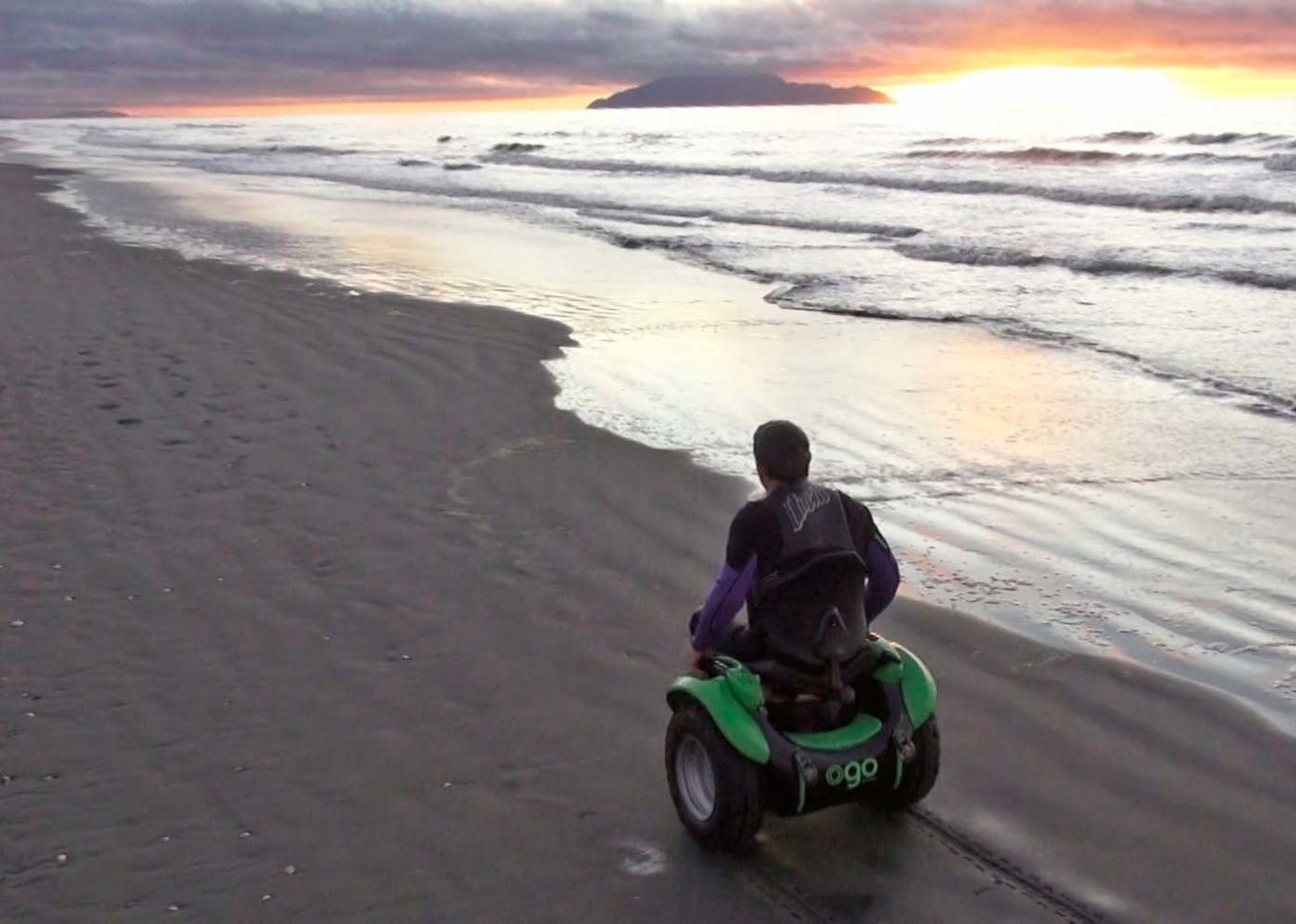2016 New Zealand Innovation Awards Innovation in Design & Engineering: Ogo Technology

For better and for worse, the No. 8 wire mentality is often used as a catch-all for Kiwi innovation and ingenuity. But the Ogo, created by Kevin Halsall (above) to improve the lives of people with disabilities and mobility challenges, certainly falls into the ‘better’ category – and not just because of the company’s mission.
“It’s part of my passion,” Halsall explains. “The more I’m innovating, the bigger the hole I see in the market.”
The Ogo is a hands-free electric personal all-terrain transport device that enables a person with a condition such as paraplegia, spina bifida, or is missing a limb to move relatively freely. But the Ogo is a whole lot more than just a fancy wheelchair.

The Ogo boasts a patented active seat control system that uses core muscle strength to activate electronic sensors that power the mechanical parts which move the device. Looking like a chair that might have been transported back in time from the 23rd century, it’s made of fibreglass, has a top speed of 20 kilometres per hour, and can travel between 30 and 40 kilometres before needing to be recharged by being plugged in to an electrical outlet.
The first Ogo was built by Halsall in his Otaki workshop for a paraplegic friend named Marcus in 2011. Halsall and Marcus met when Marcus was teaching Halsall’s daughters at Otaki College. They both shared a love of field archery, and their friendship grew over the common passion. Halsall saw Marcus, a paraplegic for 12 years, struggling through the rough terrain of their local Kapiti Club in his conventional wheelchair, which taxed his energy and stamina. Halsall wanted to help him.

That first Ogo was based on a Segway, which Halsall had to buy for around $14,000 in order to use it for parts. “The seat actually moves forward and back and side-to-side,” Halsall explains. “You just lean to wherever you want to go. The Segway [technology] creates the self-balancing aspect of it.”

After thousands of hours of work and several prototypes, Halsall’s creation won first place in the ‘starting a new business’ category in a 2015 competition sponsored by Equitise that the trans-Tasman crowd equity platform hosted to mark its acquisition of rival equity crowdfunder Rabble. The prize pack included $10,000 in web development and design work, ten hours of mentoring from investor Suse Reynolds, and one year of accounts/tax returns advice valued at $2,500 from Deloitte Private.
But Halsall says no matter how popular Ogo gets, his focus remains the same. “The most rewarding part is seeing people’s reactions and the difference it can make in people’s lives.”
EVALUATOR’S COMMENTS
Enabling and empowering people with a walking disability has great potential to improve many lives, while also improving health and wellbeing.




